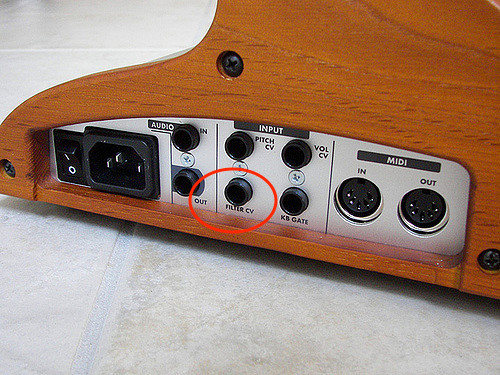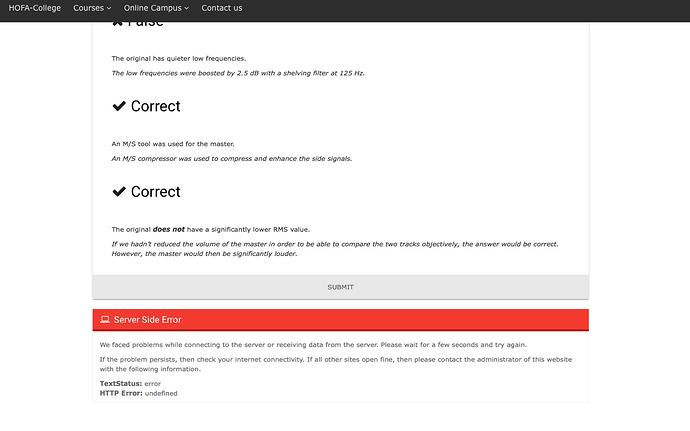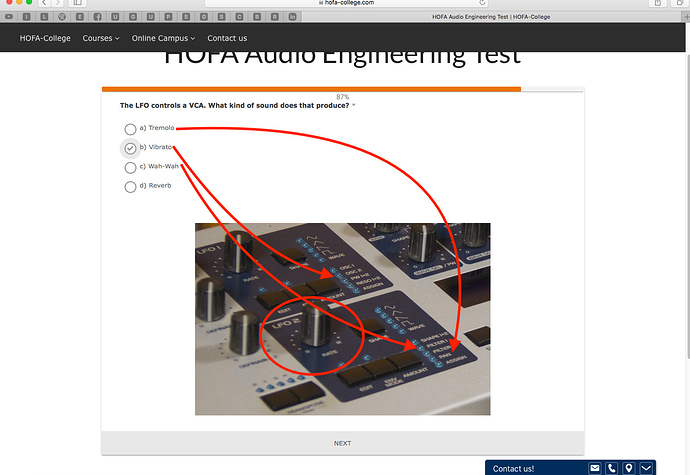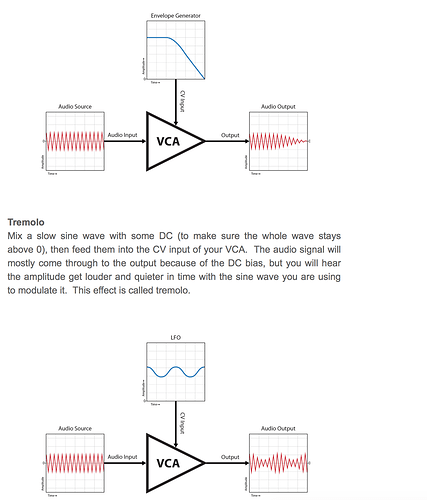Yeah, but that VCA must then be routed TO something in order for it to DO anything. Merely routing LFO -> VCA does effect anything until you then say that the VCA is routed to an oscillator (which wasn’t even implied in that test question).
There are many other things that you can route a VCA to besides an oscillator.
Here’s an example. The Moog CP251 is a Voltage Amplifier Controller. At 50 seconds in this video, he can route the voltage amplifier to any assortment of moog pedals including a filter, a wah, and an autopanner. The internal routing matrix on a keyboard works the exact same way. If the LFO is routed the VCA (as stated in the video), then it implies that the LFO (which usually defaults to the modulation wheel on a midi keyboard) is the knob/dial/rotar controlling the voltage attenuation instead of the silver knob on the moog.
??? There are many common examples of when a VCA is patched to a filter for the purpose of control. Let me preface this by saying that I see no need to distinguish between Voltage Controlled Amplifier, Voltage Controlled Attenuator, or Control Voltage Amplifier. Also CV in some cases. So CV == VCA. Same thing. Regardless of what it was called, they used to be modular. Any module with a CV input could receive signal from a CV module including oscillators, envelopes, filters… you can even force a CV to control an LFO if you want to.
The CP251 in the video is a CV generator. It plugs into the side of the moog Phatty 2, and the Voyager like the old one Brandon Drury used to own. Where you plug it in determines what it controls. When I plug it into the control I circled, its definitely controlling the filter.

Some synths have the CV embedded in the filter circuit. Look here:
Instead of an external CV generator being PATCHED to the filter, the Mini V automatically routes it there by default. When the ‘keyboard control’ is switched on, the ‘filter emphasis’ allows the keys to send variable voltage amounts specifically to the filter. When the ‘keyboard control’ is switched off, the position of the ‘filter emphasis’ dial has no effect. So Bob Moog’s implementation of VPO (voltage per octave) didn’t apply exclusively to oscillators and pitch. He and a number of others such as Oberheim, Sequential Circuits, and Roland also applied Voltage Per Octave to the filter section.
This later became known as a VCF. Voltage controlled filter. But all a VCF is is a filter with a “voltage controlled attenuator/amplifier” manipulating it.





